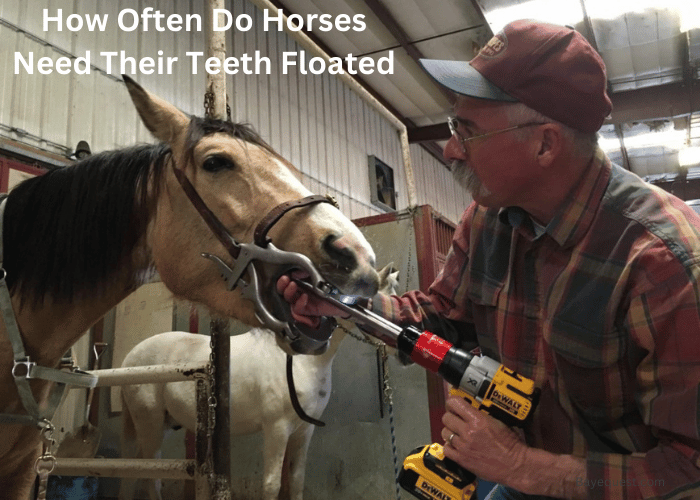Ever heard someone call ketamine a “horse tranquilizer”? It sounds wild, right? But what’s the real story?
Ketamine has a reputation that’s more than a bit misleading. Yes, vets use it on horses, but that’s just one part of its story.
This little compound wears many hats. It’s an anesthetic for humans, a painkiller, and even a new hope for treating depression.
So, before you picture cowboys wrangling wild stallions with syringes, let’s dig into what ketamine is. Spoiler alert: it’s not just for horses, nor a tranquilizer in the way you might think.
Let’s set the record straight.
Is Ketamine a Horse Tranquilizer?
Not really. It’s a bit more complicated than that. Ketamine is an anesthetic.
Yes, vets use it on horses, but that’s not its only job. It’s used in human medicine too. Doctors use it to manage pain and even to treat depression.
So, calling it just a “horse tranquilizer” is pretty misleading. It’s like saying a Swiss Army knife is just a can opener.
Ketamine does a lot more than just calm down horses. It’s a versatile tool in both veterinary and human medicine.
What is Ketamine?
Ketamine is a drug that works as an anesthetic. It helps people and animals feel no pain during surgery and is also used to manage pain in emergencies. Over time, doctors discovered its benefits in other areas.
In emergency rooms, ketamine is a go-to for pain management. It’s especially handy because it works quickly and doesn’t mess with your breathing like some other drugs.
But here’s where it gets really interesting: mental health. Researchers found that ketamine can help treat severe depression and PTSD.
It works differently from traditional antidepressants, offering relief when other treatments haven’t worked. It’s given in low doses, often through an IV, and can bring rapid relief from depressive symptoms.
Ketamine is also used in veterinary medicine. Vets use it to anesthetize animals for surgery, including horses, which is where the “horse tranquilizer” nickname comes from. But, as we’ve covered, that’s just a small part of its story.
History and Origin of Ketamine
Let’s talk about where ketamine comes from. It all started back in the early 1960s.
Scientists were looking for a new anesthetic, something safer than what they had at the time. They needed a drug that worked fast and didn’t have too many side effects.
In 1962, a guy named Dr. Calvin Stevens developed ketamine. It was first tested on animals, then humans. The results were impressive.
Ketamine could put someone under quickly, making surgeries easier and safer. Plus, it didn’t mess with breathing or heart rates too much, which was a big deal.
By 1970, ketamine was approved for use in the United States. It became a popular anesthetic in hospitals and on the battlefield.
During the Vietnam War, medics used it to treat soldiers because it worked fast and was easy to carry around.
But ketamine’s journey didn’t stop there. Over the years, doctors found more uses for it. In the 1990s, it started being used for pain management in emergency rooms.
Then, in the 2000s, researchers discovered its potential for treating depression and PTSD. This was a game-changer.
So, ketamine’s history is rich. It’s come a long way from a lab in the 60s to battlefields, hospitals, and mental health clinics. It’s a drug with a fascinating past and a promising future.
The Rise of Ketamine Clinics
The rise of ketamine clinics is a pretty interesting story.
A few years back, researchers found that ketamine could help people with severe depression and PTSD. This was huge because these are tough conditions to treat. Traditional medications often take weeks to work, but ketamine can start helping within hours.
So, ketamine clinics started popping up. These are places where people can go to get low doses of ketamine, usually through an IV.
The idea is to give patients quick relief from their symptoms. It’s not just about feeling better temporarily. It’s about breaking through when other treatments haven’t worked.
These clinics are run by medical professionals. They monitor patients closely to make sure everything goes smoothly. The treatment sessions are usually calm and quiet, helping people feel at ease.
The rise of these clinics shows how much potential ketamine has. It’s not just an anesthetic anymore. It’s becoming a key player in mental health treatment. People who’ve struggled for years are finding hope in these new clinics.
In short, ketamine clinics are changing the game. They’re giving people new options and new hope. It’s a sign of how far we’ve come in understanding and treating mental health issues.
Medical Uses of Ketamine in Human
Ketamine is a versatile drug with a range of uses. Some of its uses include:
1. Anesthesia
Ketamine is widely used as an anesthetic. It’s given before surgeries to put patients to sleep so they don’t feel pain.
It’s fast-acting and doesn’t depress breathing as much as other anesthetics, making it safer for some patients.
2. Pain management
In emergency settings, ketamine is used for pain relief. It’s especially useful for severe pain, like from injuries or surgeries.
It works quickly and is effective even in low doses. Plus, it can be used when other painkillers might not be safe.
3. Treatment-resistant depression
One of the most exciting uses of ketamine is for treating depression, especially when other treatments have failed.
Low doses of ketamine can quickly reduce symptoms of depression. It’s often given through an IV and can start working within hours.
4. PTSD (Post-Traumatic Stress Disorder)
Ketamine is also being used to help people with PTSD. Like with depression, it can bring quick relief from symptoms. This has been a breakthrough for many who haven’t found help with other medications.
5. Sedation
In critical care, ketamine is used to sedate patients. It helps keep them calm and comfortable, especially in situations where other sedatives might not be safe or effective.
6. Chronic pain management
For chronic pain conditions like complex regional pain syndrome (CRPS), ketamine can provide relief. It’s often part of a comprehensive pain management plan and can help reduce the need for opioids.
Ketamine in Veterinary Medicine
Ketamine’s versatility makes it a go-to drug in veterinary medicine. Let’s find out how:
1. Anesthesia for surgeries
Vets use ketamine to anesthetize animals during surgeries. It works fast, helping animals go to sleep quickly and stay pain-free. This makes surgeries safer and more manageable.
2. Pain management
Ketamine also manages animal pain, especially after surgeries or injuries. It helps keep them comfortable and speeds up recovery.
3. Calming aggressive animals
In situations where animals are aggressive or highly stressed, ketamine can be used to calm them down. This makes it safer for both the animals and the vets handling them.
4. Procedures for large animals
For large animals like horses and cattle, ketamine is particularly useful. It helps during procedures that require the animal to be still and pain-free. This is where the “horse tranquilizer” nickname comes from.
5. Euthanasia
In some cases, ketamine is used in euthanasia to ensure the process is painless and peaceful for the animal.
Ketamine as a “Horse Tranquilizer”
Let’s clear up the “horse tranquilizer” label for ketamine.
First off, calling ketamine a “horse tranquilizer” is a bit misleading. Yes, vets use ketamine on horses, but it’s not just a tranquilizer. It’s an anesthetic.
Here’s what that means:
Anesthetics put animals (and people) to sleep so they don’t feel pain during surgery. Ketamine does this well. It’s quick and effective, making it a favorite for vets, especially with large animals like horses.
The term “horse tranquilizer” comes from ketamine’s use in veterinary medicine. Vets use it to sedate horses and other large animals. But this term doesn’t do justice to all the other important medical uses of ketamine.
Ketamine isn’t just for horses. Vets use it on various animals, from cats and dogs to livestock. In human medicine, it’s a crucial tool for anesthesia, pain management, and even treating depression.
The nickname makes it sound like ketamine’s only purpose is to calm animals down, but that’s only a small part of its story. It’s a powerful anesthetic that helps animals and humans in many ways.
So, while “horse tranquilizer” might be a catchy phrase, it doesn’t capture the full picture. Ketamine is a versatile and essential drug in both veterinary and human medicine.
Comparing Veterinary and Human Uses of Ketamine
Ketamine is used in both veterinary and human medicine.
In veterinary settings, vets use ketamine to anesthetize animals during surgeries. It helps manage pain after operations and can calm aggressive or stressed animals. Sometimes, it is also used in euthanasia to ensure a painless process.
In human medicine, ketamine is used for anesthesia and pain management in emergencies. Recently, it has become a groundbreaking treatment for mental health issues like treatment-resistant depression and PTSD. Low doses of ketamine can provide quick relief from severe symptoms.
While both fields use ketamine for its anesthetic and pain-relieving properties, its role in mental health treatment is unique to human medicine. This shows how versatile and important ketamine is in different medical contexts.
Myths and Misconceptions of Ketamine
Myth 1: Ketamine is just a “horse tranquilizer.”
Fact. While ketamine is used by vets to anesthetize horses and other animals, it’s also a powerful anesthetic and pain reliever for humans. It’s used in surgeries, emergency rooms, and for treating mental health conditions.
Myth 2: Ketamine is only for recreational use.
Fact. Although ketamine can be abused recreationally, it has significant medical uses. It’s an important tool in pain management and anesthesia and is increasingly used to treat depression and PTSD under medical supervision.
Myth 3: Ketamine is dangerous and always leads to addiction.
Fact. Ketamine can be addictive if misused, but when used properly in medical settings, it is safe and effective. Medical professionals carefully control dosages to minimize risks.
Myth 4: Ketamine is a last-resort drug.
Fact. Ketamine is often a first-choice drug in emergencies because it’s quick and effective. Its ability to provide rapid relief makes it valuable in medical and mental health treatments.
Myth 5: Ketamine is a new drug.
Fact. Ketamine has been around since the 1960s. It has a long history of safe and effective use in veterinary and human medicine.
Myth 6: Ketamine is only used for anesthesia.
Fact. Beyond anesthesia, ketamine is used for pain management and for treating mental health conditions like depression and PTSD.
Myth 7: Ketamine causes hallucinations and out-of-body experiences every time.
Fact. While ketamine can cause hallucinations at high doses or when used recreationally, medical use involves controlled, lower doses that minimize these effects.
Myth 8: Ketamine is not widely accepted in the medical community.
Fact. Ketamine is widely accepted and used in various medical fields. Its use for mental health treatment is growing, with many clinics offering ketamine therapy for depression and PTSD.
Myth 9: Ketamine is harmful to the brain.
Fact. When used appropriately in medical settings, ketamine is safe. Long-term, high-dose recreational use can be harmful, but medical use under supervision does not pose the same risks.
Myth 10: Ketamine is only for severe cases.
Fact. While often used for treatment-resistant cases, ketamine can be used earlier in treatment plans for its rapid and effective relief of symptoms.
Safety of Ketamine
When used properly, ketamine is safe. Doctors and vets have been using it for decades. They know how to handle it.
In hospitals, it’s used for anesthesia and pain relief. It works fast and doesn’t mess with your breathing as much as some other drugs.
In mental health, ketamine is used at low doses. This helps with depression and PTSD. The treatments are done in clinics under close supervision. This means doctors watch you the whole time to ensure everything goes smoothly.
Yes, ketamine can be dangerous if abused. People using it recreationally can have bad trips or become addicted. However, this is not the case when used in a medical setting. The doses are controlled and given by professionals who know what they’re doing.
Side effects can occur, but they’re usually mild. You might feel dizzy or have an out-of-body experience. These effects go away quickly and are much less likely at the low doses used in clinics.
Risks and Side Effects of Ketamine
When you take ketamine, there can be side effects. Some are mild, like dizziness or feeling spaced out.
You might also feel nauseous or have a fast heartbeat. These usually go away pretty quickly.
At higher doses, ketamine can cause hallucinations. You might see things that aren’t there or feel like you’re out of your body. This is why you must use ketamine under medical supervision. Doctors can manage these effects and keep you safe.
Long-term use or abuse of ketamine can lead to bigger problems. It can cause bladder issues, memory problems, and addiction. Recreational use is risky and can harm your health.
Another risk is mixing ketamine with other drugs or alcohol. This can be dangerous and increase the chances of serious side effects.
The risks are lower in medical settings. Doctors use precise doses and monitor patients closely, minimizing side effects and keeping things under control.
So, while ketamine has risks, using it properly under medical care makes it much safer. Always follow medical advice and avoid using it recreationally to reduce these risks.
Ketamine in Research and Future Applications
Ketamine is receiving considerable research attention these days. Scientists are exploring its potential beyond what we already know.
One big area is mental health. Studies show that ketamine can help with depression and PTSD. Researchers are looking at how it works and how to make it even more effective.
There’s also interest in using ketamine for other mental health issues, like anxiety and bipolar disorder. The goal is to find new treatments for people without success with traditional medications.
In pain management, ketamine is being studied for chronic pain conditions. Researchers want to see if it can help with pain that doesn’t respond to other treatments. This could be a game-changer for many patients.
Another exciting area is the development of new forms of ketamine. Scientists are working on creating different ways to deliver the drug, like nasal sprays or pills. This could make treatments more accessible and easier to use.
There’s also ongoing research into the long-term effects of ketamine. Understanding these effects is crucial for ensuring it’s safe for everyone who needs it.
In the future, we might see ketamine being used in more ways than we ever imagined. The possibilities are vast, from new mental health treatments to better pain management. Researchers are scratching the surface, and there’s much more to discover.
In short, ketamine’s future looks promising. We will likely see even more benefits and new applications with continued research. It’s an exciting time for this versatile drug.
Other Horse Tranquilizers
Other horse tranquilizers, besides ketamine, are used in veterinary medicine to calm or sedate horses. Here are a few:
1. Xylazine. This is a sedative and muscle relaxant. It’s often used to calm horses during medical procedures. It helps reduce anxiety and makes handling the animal easier.
2. Detomidine. This is also a sedative used in horses. It has strong calming effects and is often used for minor surgical procedures, dental work, or pain management.
3. Acepromazine. Acepromazine is a tranquilizer that helps reduce anxiety and aggression in horses. It’s commonly used before transportation or other stressful situations.
4. Romifidine. Romifidine is similar to detomidine and xylazine. It sedates horses for various procedures and helps keep them calm and still.
Interesting read: Why are horses microchipped?
FAQs
Is ketamine only used as a horse tranquilizer?
No, ketamine is not only used as a horse tranquilizer. While it is used in veterinary medicine to sedate and anesthetize horses and other animals, its applications extend far beyond that. Ketamine is a valuable anesthetic and pain reliever in human medicine as well.
Is ketamine addictive when used for medical purposes?
Ketamine is not addictive when used for medical purposes under proper supervision. In medical settings, it’s administered in controlled doses by healthcare professionals. This minimizes the risk of addiction. However, like any drug, if it’s abused, there is a potential for addiction.
Conclusion
So, is ketamine a horse tranquilizer? Yes, but it’s so much more. It’s a versatile drug used in both animal and human medicine.
From calming horses to treating severe depression, ketamine wears many hats. It’s an anesthetic, a pain reliever, and a mental health breakthrough.
While it does help our four-legged friends, it also saves human lives and eases suffering. Next time someone mentions ketamine, you’ll know the full story.
It’s not just for horses, and it’s not just a tranquilizer. It’s a powerful tool in modern medicine, helping countless patients in countless ways.










